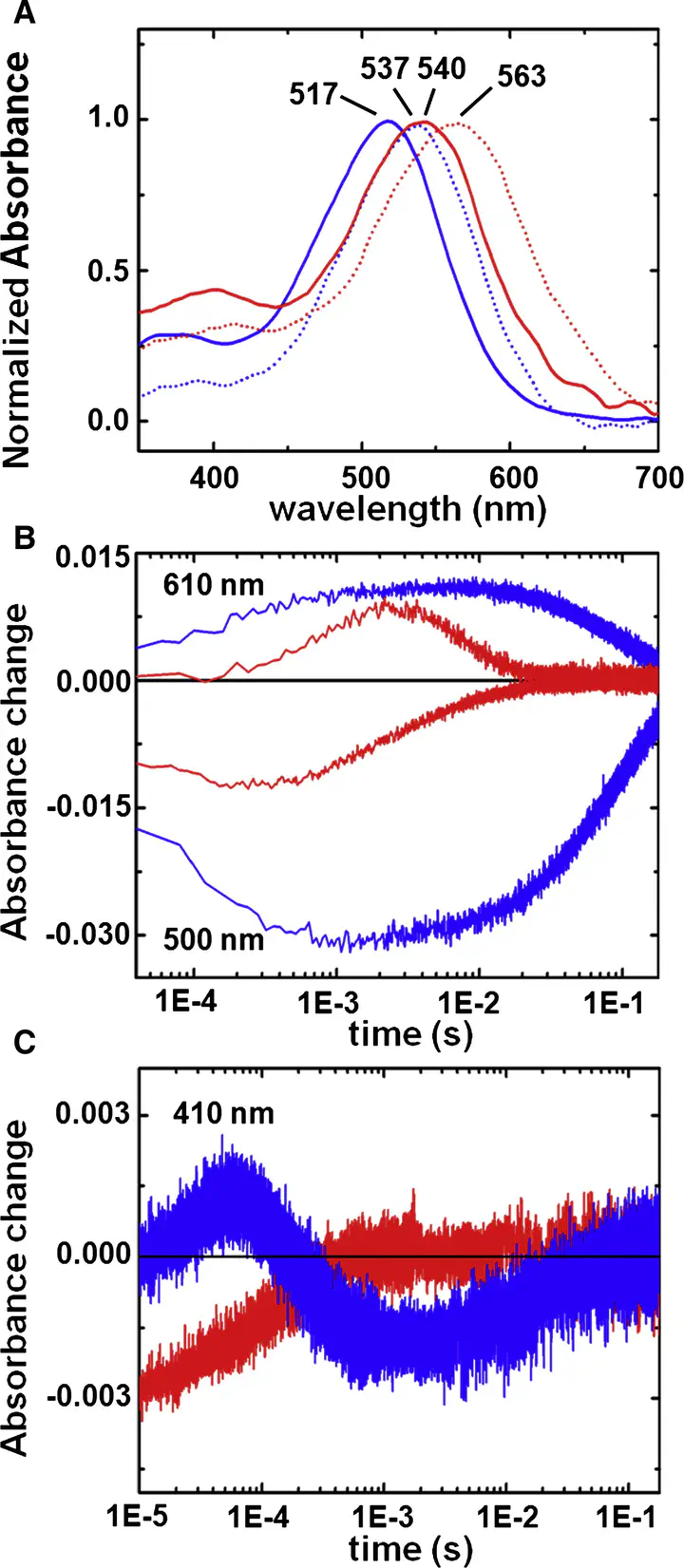Time-Resolved WAXS Reveals Accelerated Conformational Changes in Iodoretinal-Substituted Proteorhodopsin

Abstract
Time-resolved wide-angle x-ray scattering (TR-WAXS) is an emerging biophysical method which probes protein conformational changes with time. Here we present a comparative TR-WAXS study of native green-absorbing proteorhodopsin (pR) from SAR86 and a halogenated derivative for which the retinal chromophore has been replaced with 13-desmethyl-13-iodoretinal (13-I-pR). Transient absorption spectroscopy differences show that the 13-I-pR photocycle is both accelerated and displays more complex kinetics than native pR. TR-WAXS difference data also reveal that protein structural changes rise and decay an order-of-magnitude more rapidly for 13-I-pR than native pR. Despite these differences, the amplitude and nature of the observed helical motions are not significantly affected by the substitution of the retinal’s C-20 methyl group with an iodine atom. Molecular dynamics simulations indicate that a significant increase in free energy is associated with the 13-cis conformation of 13-I-pR, consistent with our observation that the transient 13-I-pR conformational state is reached more rapidly. We conclude that although the conformational trajectory is accelerated, the major transient conformation of pR is unaffected by the substitution of an iodinated retinal chromophore.